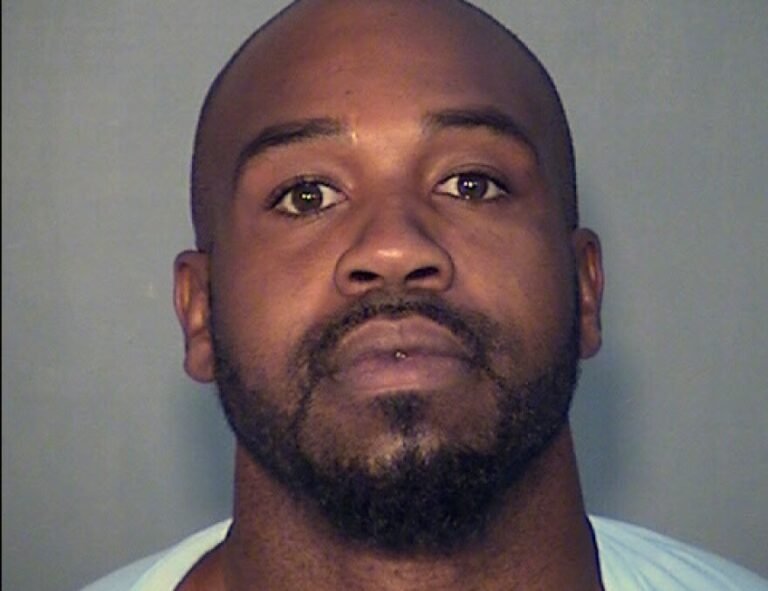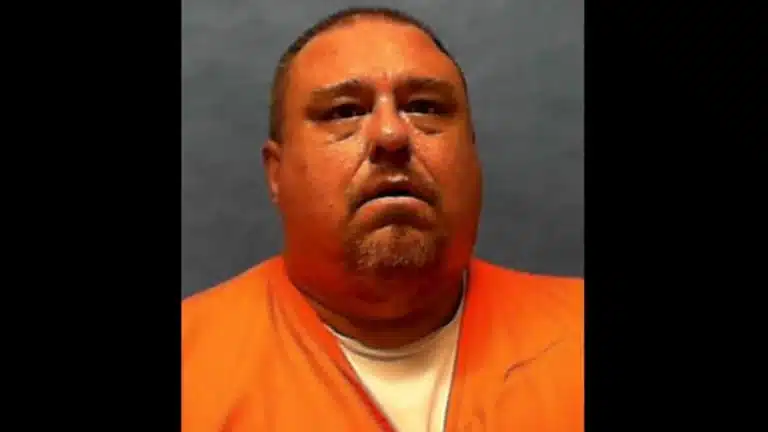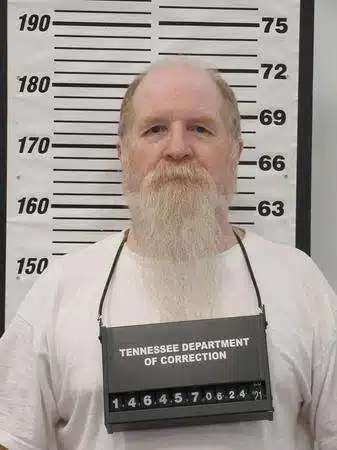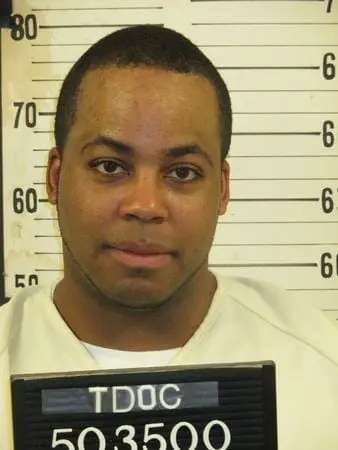
Rickey Bell Murders Starr Harris In Tennessee
Rickey Bell was sentenced to death by the State of Tennessee for the sexual assault and murder of Starr Harris
According to court documents Rickey Bell would kidnap Starr Harris. The woman would be sexually assaulted and murdered
Rickey Bell was arrested, convicted and sentenced to death
Rickey Bell Photos
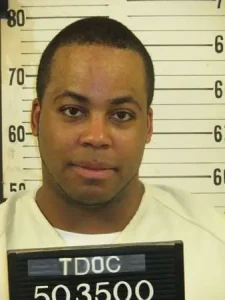
Rickey Bell FAQ
Where Is Rickey Bell Now
Ricky Bell is incarcerated at Riverbend Maximum Security Institution
Rickey Bell Case
The victim lived with her husband, Thomas R. Harris, Jr. (“Husband”), at 57 Richardson Landing Lane in Tipton County, Tennessee (“the House”). Also living with them were several of his and her children. Husband owned a landscaping and property preservation business with Carolyn Kelly Phelps. The victim also worked in the business, performing administrative work from the home office located in the House.
The business required varying numbers of laborers during any given week. The laborers showed up each morning at the House to receive their work assignments, if any, for the day. Husband paid the laborers on a weekly basis, in cash. The laborers were informed that they were paid only for those hours worked. The Defendant was one of Husband’s laborers.
On the morning of June 1, 2010, the day after Memorial Day, several of Husband’s laborers showed up to collect their pay for the prior week and to get their work assignments for the day. Husband and the victim had been up late the night before, so Husband remained in bed while one of his sons, Ricky Harris (“Son”), handed out the cash wages. Son recalled paying the Defendant $300. When the Defendant arrived at the House to collect his pay, he was wearing black pants or shorts.
Later that morning, Son left the House with Husband and Ray Horne to begin the day’s work. All three men left in a single vehicle.2 Before they drove to their first property, they went to Munford Tire to have some tire work done. Munford Tire was located several miles from the House. While the men were waiting for the work to be done, Josh Harris, another of Husband’s sons, walked over from a nearby school to join them. All four men went to a nearby restaurant to have lunch. On the way back to the tire shop, Husband got a phone call from the victim at 1:10 p.m.
The Defendant (Rickey Bell) did not receive a work assignment that morning, so he returned home. Rickey Bell lived at 7612 Richardson Landing Road, less than one mile from the House. Rickey Bell lived with his mother, Belinda Joyce Bell, and his two brothers. When Rickey Bell counted his pay, he believed he had been paid $50 less than he was owed. Deciding to inquire about the shortage, Rickey Bell returned to the House at approximately 1:00 p.m. He was still wearing his black pants. He knocked on the door, and the victim answered. Rickey Bell asked to speak to Husband. The victim called Husband’s cellphone, using the landline at the House. When Husband answered, the victim handed the phone to the Defendant, and Rickey Bell spoke with Husband about his pay. Husband explained that his pay was $300 instead of $350 because Rickey Bell had missed a day of work in order to go to the doctor.
Andrew Michael Redditt, one of Husband’s neighbors, testified that he saw Rickey Bell at the House that day at 1:00 p.m. He saw the Defendant knock on the front door, and he saw the victim answer the door. He then saw the Defendant enter the House. Redditt stated that the Defendant was wearing black shorts and a black T-shirt. Tommy Redditt, Andrew’s father, testified that he saw a black man who worked for Husband standing near the House at approximately 1:30 p.m. on June 1, 2010.
After speaking directly with Rickey Bell and on the House landline phone with Husband, the victim exchanged text messages with her friend, Alexia Block, on her cell phone. At 1:22:52 p.m., the victim texted Block, “Ok ty honey! I have a flat tire right now, so ․ my day isn’t going so good!” At 1:23:52 p.m., Block texted the victim, “Where r u? Do u need me?” At 1:25:12 p.m., the victim texted Block, “No I’m home ․ the workers tried t fix it or some crap (it had a screw in it) ․ & now they said it can’t be fixed ․ uuuugggghhh [.]” At 1:28:03 p.m. Block texted the victim, “I’m sorry! I will pray your day gets better. I love ya[.]” Block received no further texts or other communications from the victim.
The victim also spoke on the phone with Kelly Phelps several times during the first part of the day. Phelps’ last phone conversation with the victim was shortly before 1:00 p.m. When Phelps called the victim at 2:30 p.m., however, she did not get an answer. Johnnie Phelps, Phelps’ ex-husband, spoke with the victim over the landline phone at 1:30 p.m. that day, and the call lasted approximately one minute. He described the conversation as normal.
At 2:16 p.m., a FedEx driver delivered a package to the House. The driver knocked on the front door, but no one answered.
At approximately 8:00 p.m., Nathan McKell, the son of Husband’s ex-wife, returned home to the House where he lived with the victim and Husband. McKell had been working for the business that day, beginning at about noon. When McKell walked into the House, he noticed that the office furniture where the victim normally worked was in disarray. He also noticed that the back door was open, although it normally was kept closed. Neither the victim nor the family’s two dogs were in the House.
McKell called Husband and then began looking for the victim outside. Behind the House was a hilly and heavily wooded area. McKell began exploring this area on a 4-wheeler. He turned the vehicle over on a steep hill and when it came to rest, the headlights were shining on the victim’s body. The front of the victim’s upper torso was bare, with her shirt ripped open and her bra pulled down to her waist. The victim was wearing shorts that were buttoned at the waist. The victim’s underwear was pulled up above the waistline of her shorts. She was barefoot. One of the investigating officers observed dirt on the back of the victim’s shorts that was inconsistent with the surface on which she was found. The area where the victim’s body was located was approximately 100 yards into the woods.
One of the investigating officers, who arrived at the scene at approximately 9:55 p.m. on June 1, described the weather as “extremely hot even though it was at night” and that the “bug activity” was “heavy.” She observed “maggot activity” on the victim’s body. Due to the difficulties presented by the terrain where the victim was found, her body was not removed until approximately 5:00 a.m. on June 2.
Dr. Lisa Funte, a forensic pathologist, performed an autopsy on the victim, beginning on June 2 and concluding on June 3, 2010. Her report, admitted into evidence, included the following description of Dr. Funte’s initial observations of the body as she recovered it from the body bag: “Fly eggs and maggots are present on all body surfaces. The maggots appear to be in the early stages of development. Green to brown-grey discoloration is present on the torso, head, and neck.” Dr. Funte explained at trial:
Basically this is the beginning of decomposition. When somebody is outside, natural processes take place. Bugs find the body. One of the first players there are flies, and they will lay eggs on the decedent. Those eggs, given a period of time depending on the species of fly, hatch to form the larva or the maggot. Those will then mature, pupate. Sometimes you can see the pupa casings. I did not see pupa casings in this case. And then you’ll produce more flies. As decomposition goes on, other types of insects show up and do what they do.
She concluded, “In this case this individual was in a state of very early decomposition.”
Dr. Funte testified that the victim suffered “extensive trauma to the neck and to the upper torso.” The victim died from “strangulation associated with blunt force injuries.” Dr. Funte added that “some of those blunt force injuries were to the extent that they could have caused death in and of themselves.” The blunt force injuries included a “basilar hinge fracture” to the base of the victim’s skull. Dr. Funte explained that, “[w]hen you have a basilar skull fracture you can cause contusion of the brain stem or a bruising of the brain stem, and that can cause disruption in the rhythm of your heart, which can be fatal.” On the right side of the victim’s head, Dr. Funte observed “a big gaping, or open, laceration.” This wound, a result of blunt force trauma, could have caused fatal intracranial bleeding.
Dr. Funte also noted an injury to the victim’s chin, and she explained the significance of this injury as follows:
Well, the most common way to cause a hinge fracture, which is the type of fracture seen in [the victim’s] skull, it’s a fracture that goes across the base of the skull, is actually an impact of the chin that pushes the head up, fracturing kind of a pivot area around that foramen magnum where the spinal cord comes up.
Dr. Funte testified that the injury to the victim’s chin was consistent with a kick to her chin. She also testified that the injuries to the victim’s “upper torso of [sic] the neck area” were consistent with stomping.
Dr. Funte testified that the victim had “extensive hemorrhage throughout the soft tissues in the muscles of the anterior neck” and that the victim’s hyoid bone was fractured. There also was “bleeding in the muscles and soft tissue of the upper part of the chest.” There was hemorrhage in the victim’s thyroid gland. These injuries were consistent with a foot, knee, or log depressed onto the victim’s neck or upper torso. Dr. Funte did not observe any finger or thumbprints on the victim’s neck.
Dr. Funte noted blunt force injuries to the victim’s legs and dirt on the bottoms of the victim’s feet. The victim’s left thumbnail was “broken and avulsed,” or “ripped off.”
Dr. Funte collected hairs that were in the victim’s left hand and released those hairs to law enforcement officers. She also collected hairs from the victim’s scalp and turned those over to officers. Dr. Funte collected evidence relevant to a “rape kit” and released those materials to Deputy Chief Turner.
Asked about indications of a sexual assault, Dr. Funte testified that there were blunt force injuries to the inside of the victim’s thighs. She did not find any trauma to the victim’s genitals, but she explained that “[i]t’s the rare case where you actually do.”
As to the strangulation injuries Dr. Funte observed, she testified that the injuries were consistent with the victim losing consciousness in six to eight seconds. If the pressure sufficient to cause the loss of consciousness continued, the victim would have died within approximately a minute. The fracture to the victim’s skull could have caused the victim’s death instantaneously or death from the fracture could have taken “minutes or hours.” Death from the intracranial hemorrhage could have taken “up to several hours.” Dr. Funte could not opine as to the order in which the victim’s injuries were inflicted. However, she stated that the victim’s strangulation injuries, the skull fractures, and the intracranial hemorrhage all occurred “either prior to or at the time of death.” She was unable to estimate the time of the victim’s death.
Along with Dr. Funte’s autopsy report, associated photographs were admitted into evidence.
On cross-examination, Dr. Funte agreed that, when she removed the victim’s body from the body bag, the shorts that the victim was wearing were buttoned. The front of the victim’s shorts was pulled down slightly and the victim’s panties were pulled above the waistline of the shorts. The shorts were not torn, and the buttoning was not torn or stretched. However, the back side of the shorts appeared to have dirt and a green discoloration “like some plant staining.”
Dr. Funte found blood under two of the victim’s fingernails on the right hand. Although she found dirt on the bottoms of the victim’s feet, she did not note any lacerations or abrasions there.
Dr. Funte clarified that there were at least four impacts to the victim’s head and that any of them could have been fatal. Moreover, death from any of those blows to the head could have been instantaneous.
After the victim’s body was found, the investigation at the crime scene began and continued for several days. Lieutenant Richard Nessly of the Tipton County Sheriff’s Office spoke with Rickey Bell at the Defendant’s home on the night of June 1, 2010. Rickey Bell told Lt. Nessly that he had been to the House that morning to get paid. After he returned home, he realized that his pay was $50 short. Rickey Bell returned to the House and spoke with “a lady that was there.” The “lady” called Husband on the landline and gave the phone to Rickey Bell after Husband answered. Rickey Bell spoke with Husband and then returned home. The Defendant told Lt. Nessly that his mother arrived home that afternoon between 2:30 and 2:50 p.m. Lt. Nessly did not observe any cuts or scratches on the Defendant’s body or other evidence that the Defendant had been in a struggle. At the Defendant’s house, Lt. Nessly noticed wet clothes in the washing machine and an open condom wrapper on the Defendant’s bed. The Defendant told Lt. Nessly that he had worn black pants earlier that day but changed into shorts after returning home because it was hot.
Rickey Bell gave a second statement to law enforcement officers on June 2, 2010, and a third statement on June 8, 2010. These statements largely were consistent with the Defendant’s first statement. In his subsequent statements, Rickey Bell added that he did not go inside the House. In his third statement, the Defendant stated that he left the House the second time at approximately 1:30 p.m. He denied being in the woods behind the House. Shown a photograph of a lighter in the shape of a handgun found near the victim’s body, the Defendant denied ever seeing or touching it.
During the Defendant’s June 2, 2010 statement, Tennessee Bureau of Investigation (“TBI”) Special Agent John Sullivan examined and photographed the Defendant’s torso, and he testified that he did not recall seeing any scratches on the Defendant’s torso. Sp. Agent Sullivan also observed Husband’s body on June 2, 2010, and noticed scratches on his hand and left forearm. Sp. Agent Sullivan testified that Husband’s injuries looked “similar” to the scratches Sp. Agent Sullivan got when he worked in his yard, adding that he had not deemed Husband’s injuries “significant.”
On June 3, 2010, law enforcement officers returned to the crime scene to continue searching for evidence. They found a condom and a lighter that was in the shape of a handgun (“the handgun replica”) at a location approximately one hundred feet from the place where the victim’s body was found. In the same vicinity, an officer noticed broken branches, one of which had hairs on it. All of these items were collected, and the three hairs collected from the branch subsequently were determined to be “consistent with having a common origin with the source of” the victim’s head hairs. Although officers noticed an indentation in the area they described as a “butt print,” they did not photograph or videotape this image. A “trail of disturbed leaves” led from this additional crime scene (“the assault scene”) to the location of the victim’s body (“the final scene”).
Buccal swabs were obtained from Rickey Bell with his consent. Forensic examination revealed that the condom retrieved from the assault scene contained the Defendant’s semen.3 The victim’s DNA was not identified on the condom. Analysis of the handgun replica resulted in a partial DNA profile that matched portions of the Defendant’s DNA profile.4 The Defendant’s DNA was not found on or in the victim’s body. Husband’s DNA was found in the samples taken from the victim’s body for the rape kit. Only the victim’s DNA was recovered from the fingernail scrapings of her right hand.
Ten hairs obtained from the victim’s left hand during the autopsy were submitted for forensic examination. According to the “scientific examination report” admitted into evidence, six of these ten hairs were determined to be “consistent with having a common origin with the source of” the victim’s head hairs. The remaining four of these ten hairs exhibited “hair treatment and damage.” Accordingly, “due to the lack of substantial microscopic features, the possible common origin of these hairs” could not be “established or excluded.” John Hoang, the trace examiner who analyzed the hairs, described these four hairs at trial as “colorless, grey, or not pigmented.”
Sp. Agent Sullivan showed a photograph of the handgun replica to the Defendant’s mother on June 8, 2010. She wrote on the front of the photograph, “I see a gun like this a year ago that [one of the Defendant’s brothers] have.” Sp. Agent Sullivan also walked from the final scene to the Defendant’s residence and determined that the distance took seven and one-half minutes to traverse.
The Defendant’s mother testified at trial that she arrived home at 2:00 p.m. on June 1, 2010, and that the Rickey Bell was sitting inside when she arrived. The Defendant was wearing a white T-shirt, blue shorts, and white socks without shoes. Bell also stated that she had taken Rickey Bell to the doctor approximately two weeks before the killing.
Husband testified, and he denied killing the victim. He stated that he did not have any life insurance on the victim. He also stated that he and the victim had had sex during the early morning hours of June 1, 2010. He acknowledged that he sent five text messages to his ex-wife, Rebecca Harris, on the afternoon of June 1 and acknowledged that the messages were not work-related. Phone records reflected that Husband’s cellphone was inactive from 1:32 p.m. to 2:19 p.m. on June 1, 2010. Husband admitted that he spoke with Rebecca Harris during the trial about the “grey” hairs referred to earlier in the trial and told her that the hairs might be his because he and the victim had had sex earlier that day and she had not showered. He stated that he took digital photographs of the work he had done on the afternoon of June 1, 2010, but did not turn those photographs over to the police because he was never asked to.
The defense adduced proof that James Arcutt, another laborer for Husband’s business, was dating a woman that the Defendant also was dating simultaneously. Arcutt was angry about this situation and did not like Rickey Bell. Arcutt was seen on the morning of June 1 when he collected his pay at the House, but his whereabouts that afternoon were unknown. Arcutt lived in the same vicinity as the victim and the Defendant.
Rebecca Harris, Husband’s ex-wife, testified that Son had told her that he had been “waiting on” Husband to arrive at Munford Tire. She also stated that, earlier in the trial, Husband had talked to her about her testimony.
In rebuttal, Son denied telling Rebecca Harris that he had waited for Husband at Munford Tire.
Based on this proof, the jury convicted Rickey Bell of first degree murder in the perpetration of a kidnapping; first degree murder in the perpetration of a rape; especially aggravated kidnapping; and aggravated sexual battery as a lesser-included offense of aggravated rape. The trial court merged the felony murder (rape) conviction into the felony murder (kidnapping) conviction. At the ensuing sentencing hearing, the parties stipulated that the Defendant’s birthdate was September 2, 1979, and that he was in Pennsylvania in 1997. The State introduced proof that Rickey Bell had prior convictions in Pennsylvania for robbery of a motor vehicle and aggravated assault, for which he was sentenced in November 1997. The State adduced no additional proof. The defense called a single witness, the Defendant’s mother, Belinda Bell.
https://caselaw.findlaw.com/court/spr-crt-ten-at-jac/1748758.html
